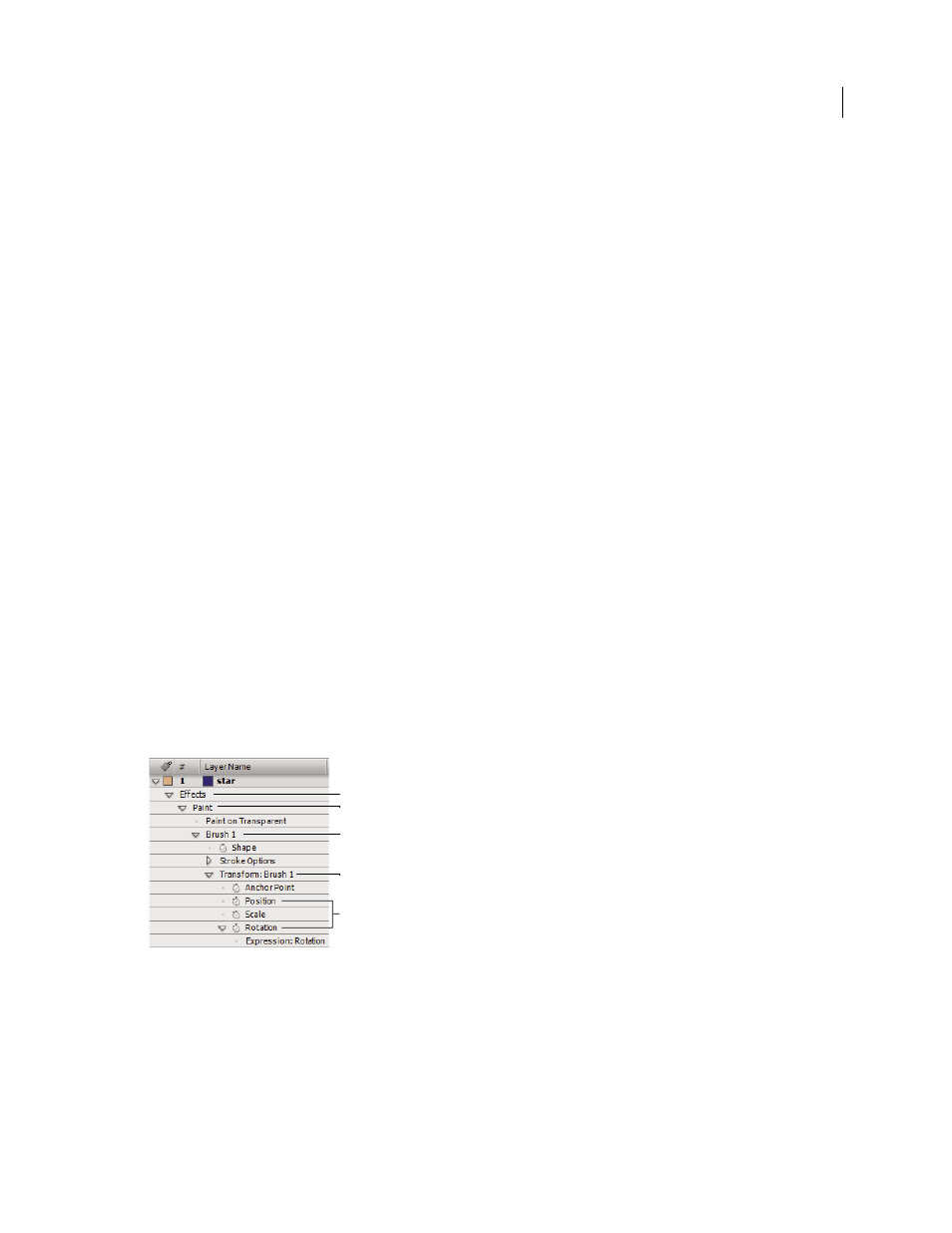Adobe After Effects CS4 User Manual
Page 686

680
USING AFTER EFFECTS CS4
Expressions
Last updated 12/21/2009
Returns the MarkerKey object with this name. Use only on marker properties.
nearestKey(t)
Return type: Key or MarkerKey.
Returns the Key or MarkerKey object nearest to a designated time.
numKeys
Return type: Number.
Returns the number of keyframes on a property. Returns the number of markers on a marker property.
Note: If you use the Separate Dimensions command to separate the dimensions of the Position property into individual
components, the number of keyframes changes, so the value returned by this method changes.
propertyGroup(countUp = 1)
Return type: Group.
Returns a group of properties relative to the property on which the expression is written. For example, if you add the
propertyGroup(1)
expression to the Rotation property of a brush stroke, the expression targets the Transform
property group, which contains the Rotation property. If you add
propertyGroup(2)
instead, the expression targets
the Brush property group. This method lets you establish name-independent relationships in the property hierarchy.
This method is especially useful when duplicating properties that contain expressions.
The
numProperties
method for
propertyGroup
returns the number of properties in the property group.
This example returns the number of properties in the group that contains the property on which the expression is
written:
thisProperty.propertyGroup(1).numProperties
propertyIndex
Return type: Number.
Returns the index of a property relative to other properties in its property group, including property groups within
masks, effects, text animators, selectors, shapes, trackers, and track points.
name
Return type: String.
Returns the name of the property or property group.
Example: Animating with the propertyGroup method and propertyIndex attribute
Values of propertyGroup relative to Position property of a brush stroke
A. propertyGroup(4) B. propertyGroup(3) C. propertyGroup(2) D. propertyGroup(1) E. Position propertyIndex value is 2; Rotation
propertyIndex value is 4.
In this example, the
propertyGroup
method for each brush stroke targets the Brush property group because that
group is two property groups up from the Rotation property. The
propertyIndex
attribute in each Brush stroke then
returns a unique value for each Brush stroke. The resulting value is then multiplied by the time and 200 and applied
to each rotation value, rotating each brush stroke differently, creating swirling paint strokes:
propertyGroup(2).propertyIndex * time * 200
D
C
B
A
E
